Java
Medium
150
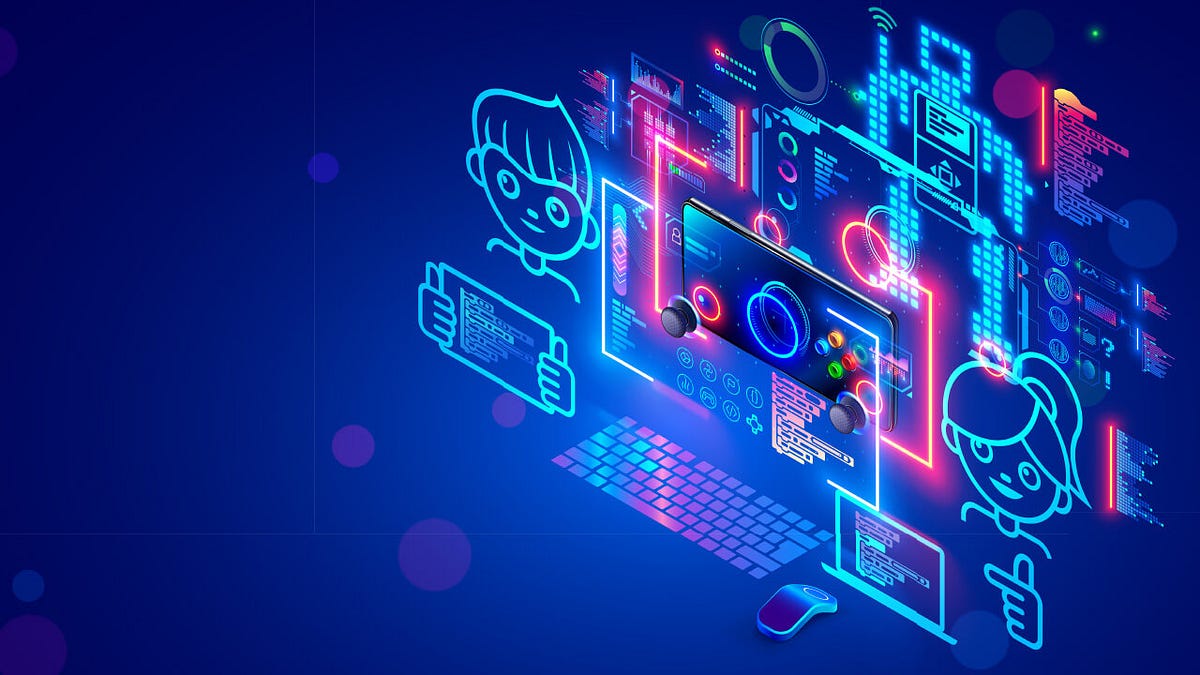
Image Credit: Medium
Comparison of Java and C++: A Comprehensive Evaluation
- This report compares Java and C++ based on criteria such as syntax, performance, tooling, and use cases.
- Java is known for platform independence and a robust ecosystem, while C++ offers low-level memory manipulation and high-performance capabilities.
- C++ provides more flexibility with features like operator overloading and templates but has complex syntax and allows low-level operations that may be challenging for beginners.
- In real-world benchmarking, C++ excels in compute-heavy applications, while Java is preferred for large-scale distributed systems; mastering both languages opens doors to various career paths in software development.
Read Full Article
9 Likes
TechBullion
388

Image Credit: TechBullion
Developing Custom Applications with Java Card Technology
- Java Card is a trusted technology for secure applications on smart cards and embedded devices, ideal for sectors like banking, telecom, government ID, and enterprise access.
- Developers appreciate Java Card’s security features, including strong isolation between applets, cryptographic support, and efficient memory usage, making it perfect for environments where data protection is paramount.
- Creating Java Card applications involves defining the use case, coding applets using JCDK, simulating behavior on test cards, and deploying them via GlobalPlatform tools to ensure safety and efficiency.
- Java Card is preferred for its security features, interoperability across different hardware vendors, and its adaptability in multi-application, security-sensitive environments such as identity and access systems.
Read Full Article
23 Likes
Javarevisited
282
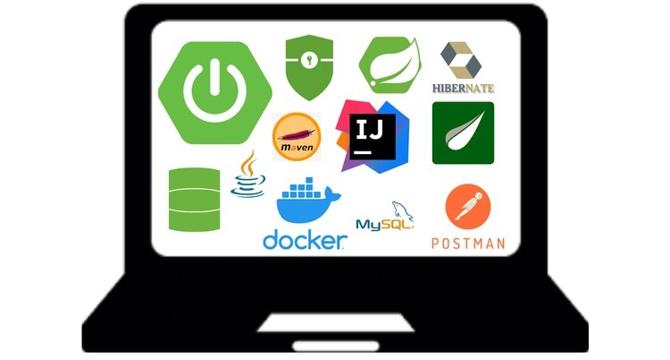
Image Credit: Javarevisited
Top 10 Courses to Learn Spring Boot in 2025 for Java Developers - Best of Lot
- Resources like books, tutorials, and online courses are available for those interested in learning Spring Boot.
- Previous preference for learning from books has shifted towards online courses like Spring Boot 3, Spring 6 & Hibernate for Beginners.
- Understanding what Spring Boot is, its benefits, and reasons to learn it are important before delving into Spring Boot courses.
- The article also includes mentions of Java, Unix, Tibco RV, and FIX Protocol Tutorial within its content.
Read Full Article
16 Likes
Medium
132

From Loops to Lambdas: My Journey as a Java Developer in a Changing Tech Landscape
- Java has evolved over the years, introducing features like Lambdas, Streams, and Records that have reshaped how developers write code.
- The Java community, including open-source contributors and authors of tools like Lombok and JUnit, has played a significant role in the growth of Java developers.
- As Java continues to modernize, upcoming projects like Project Loom and better native image support are awaited, with a focus on mentoring others and continuous learning.
- Developers are encouraged to embrace change, keep learning, and write impactful code, as highlighted in this Java developer's journey.
Read Full Article
7 Likes
Discover more
Medium
17
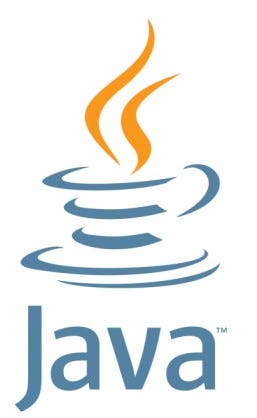
Image Credit: Medium
Modernizing Legacy Java: A Practical Guide to Migrating to Java 17/21+
- The article emphasizes the importance of migrating to modern Java versions for security, performance, and support benefits.
- It addresses common challenges faced during legacy system maintenance, such as outdated dependencies and lack of modularity.
- Readers are provided with a practical roadmap and best practices for migrating legacy Java systems.
- The guide stresses the significance of long-term maintainability and future-proofing Java applications.
- Prior to migration, assessing the current Java environment and documenting coding practices are recommended.
- Having a clear migration plan is crucial to avoid delays and unexpected issues during the process.
- Choosing Java 17 or 21 LTS versions is recommended, and gradual upgrades from older versions are suggested for larger codebases.
- Strategies like the strangler pattern and identifying potential blockers help in a smooth transition.
- Preparing the codebase through modernizing tools, updating plugins, and addressing outdated APIs is advised.
- Enhancing testing practices, integrating tests into CI/CD pipelines, and using static code analysis tools help ensure a successful migration.
Read Full Article
1 Like
Medium
198
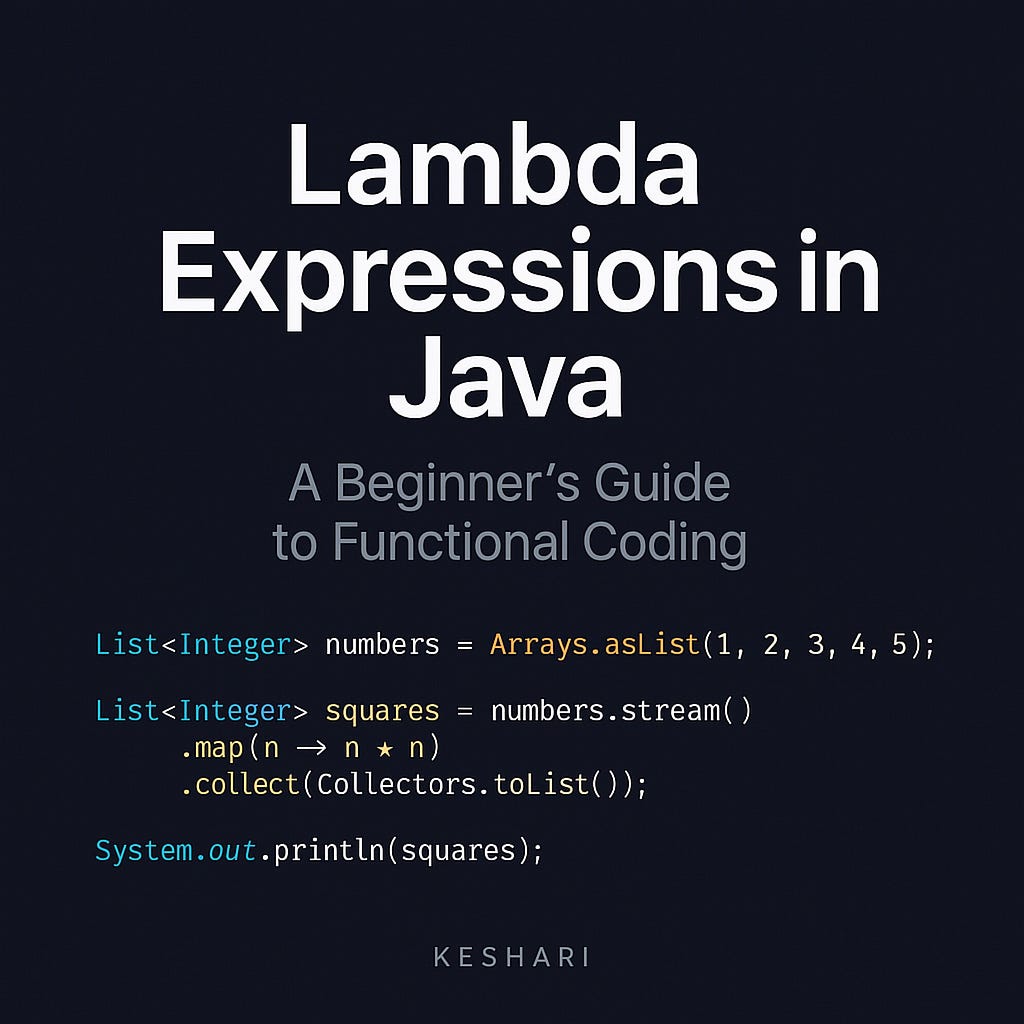
Image Credit: Medium
Lambda Expressions in Java – A Beginner’s Guide with Simple Examples
- Lambda expressions in Java allow for writing cleaner, shorter, and more readable code, especially useful for working with collections or functional-style programming.
- A lambda expression is a concise block of code that takes parameters and returns a value, often used to implement functional interfaces.
- Java examples demonstrate the syntax and benefits of lambda expressions, such as simplifying code for sorting, filtering, and transforming data.
- Lambda expressions reduce boilerplate code, improve readability, enable functional programming, and work well with Java Streams and Collections.
Read Full Article
11 Likes
Javacodegeeks
367
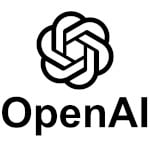
Image Credit: Javacodegeeks
Using the OpenAI API with Java
- OpenAI's Java client simplifies integrating AI into Java applications, allowing developers to leverage powerful models like GPT-4 and GPT-3.5.
- OpenAI develops advanced AI models such as ChatGPT, Codex, and DALL·E, focusing on safe and beneficial AI technologies.
- To access OpenAI's APIs programmatically, developers need an API token, which should be securely stored and not exposed publicly.
- The Java OpenAI SDK offers functionalities for text completions, chat interactions, assistants, and more.
- Code example demonstrates how to initialize OpenAI client, make completion requests, chat interactions, and assistant-driven conversations.
- The program includes exception handling for potential runtime errors and showcases different interaction types with OpenAI's APIs.
- Various dependencies and Maven configurations are necessary to use the OpenAI Java SDK in Java applications.
- Developers can create AI-driven applications easily with features like completions and assistants provided by the OpenAI Java SDK.
- The Java OpenAI SDK enables building both simple and complex AI-driven applications efficiently.
- It is essential to handle exceptions, consider rate limits, and secure API tokens properly when deploying AI applications using the OpenAI Java SDK.
Read Full Article
22 Likes
Dev
435

Image Credit: Dev
Why Java Remains the King of Enterprise Development in 2025
- Java remains the dominant programming language for enterprise development, thanks to its platform independence, strong memory management, and robust ecosystem.
- Recent Java versions have introduced features like records, text blocks, and performance improvements to meet modern development needs.
- Java has adapted well to cloud-native development with frameworks like Spring Boot and tools like GraalVM Native Images for serverless environments.
- Java's continuous evolution with a predictable release cycle and upcoming projects like Valhalla ensures its relevance in the ever-changing software development landscape.
Read Full Article
26 Likes
Javacodegeeks
203

Image Credit: Javacodegeeks
Secure Inter-Service Communication in Java Microservices with mTLS
- Securing communication between microservices is crucial in modern architectures to protect data and maintain trust boundaries.
- Mutual TLS (mTLS) authentication ensures only authorized services can communicate by verifying identities and encrypting data.
- Steps involve generating certificates, configuring Spring Cloud Gateway, enabling mTLS in microservices, and deploying to Kubernetes.
- Best practices include regular certificate rotation, dedicated CA usage, monitoring TLS handshake failures, and keeping truststores updated.
Read Full Article
12 Likes
Medium
375
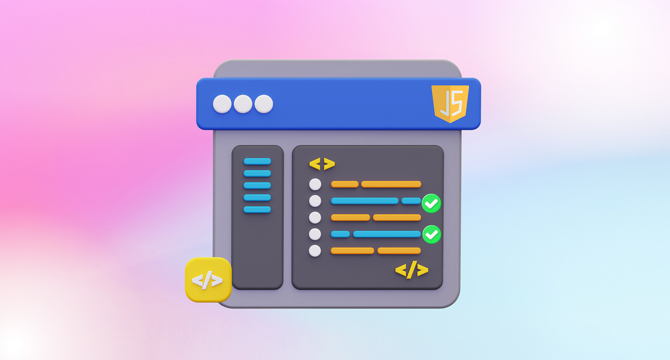
Image Credit: Medium
1Z0–830 Sample Questions for Java SE 21 Developer Certification Exam (with Resources)
- The article provides sample questions for the 1Z0–830 exam or Java 21 certification exam and offers a discount coupon for a related Udemy course.
- Java 21 Certification Exam (1Z0–830) is considered challenging with long, intricate questions and multiple options.
- The exam duration has been extended to 120 minutes for 50 questions, requiring candidates to solve questions efficiently.
- It is crucial to practice sample questions and take mock tests to enhance speed and accuracy in preparation for the exam.
- The Udemy course '1Z0–830 Java SE 21 Developer Professional Exam Practice Test' contains over 266 questions related to the certification.
- Sample questions from the article involve coding scenarios and multiple-choice queries to test Java knowledge.
- Readers are encouraged to attempt the sample questions provided in the article and can avail the course at a discounted price using a coupon code.
- The article emphasizes the importance of first-time success in the Java certification exam due to its cost and difficulty level.
- The author offers insights into preparing for Java SE 17 certification as well and recommends relevant Udemy resources for exam readiness.
- To access additional Java 21 exam-related articles and resources, readers are directed to explore further content shared by the author.
Read Full Article
22 Likes
Dev
30

Image Credit: Dev
Keywords vs Reserved Words in Java: What's the Difference?
- Keywords in Java are predefined, reserved words used for specific functions like int, class, static, if, for, public.
- Reserved words in Java are also reserved by the language but may not currently serve any function but are kept for potential language enhancements.
- Key difference: All keywords are reserved words, but not all reserved words are keywords. Keywords actively define behavior, while reserved words are placeholders for future functionality.
- Understanding the difference helps avoid naming conflicts and prepares for potential future changes in Java language.
Read Full Article
1 Like
Dev
128

Image Credit: Dev
Implementing MCP Servers in Java: Stockfish example
- Model Context Protocol (MCP) enables AI models to interact with external tools and services for reproducibility, predictable performance, and security guarantees.
- This article demonstrates creating an MCP server in Java using Stockfish, a popular open-source chess engine.
- Java was chosen for its robust ecosystem and widespread adoption in enterprise applications.
- Implementing the MCP server involves setup with Stockfish binary in a Docker image and using the Quarkus application.
- The server functionality with Quarkus involves dependencies, tool implementations, and integrating Stockfish analysis.
- Building the MCP server involves creating a Docker container and using a multi-stage build for the application.
- To test the server, the MCP inspector can be used to verify the functionality of the implemented tools.
- Integration with AI assistants and potential configurations for using the Stockfish MCP server are discussed.
- Creating an MCP server in Java is straightforward and beneficial for enhancing AI assistants with predictable functionality.
- Using Docker for running MCP servers provides isolation, reproducibility, and security benefits.
Read Full Article
7 Likes
Javacodegeeks
380

Image Credit: Javacodegeeks
What Is an API in Java?
- APIs in Java are crucial for building scalable, modular, and maintainable applications across various domains like web development and mobile apps.
- In Java, APIs encompass built-in libraries and custom REST APIs developed using tools such as Spring Boot or Jakarta REST.
- APIs, or Application Programming Interfaces, serve as contracts facilitating communication between software applications and promoting abstraction and modularity.
- They can be Library APIs (e.g., Java's Collections API), Web APIs (e.g., RESTful services), or Hardware APIs (enabling software-device interactions).
- Java APIs include the Standard Library (JDK-provided packages like java.util) and third-party libraries (e.g., Apache Commons, Google Guava).
- In Java, APIs enable encapsulation, abstraction, code reusability, interoperability, scalability, and maintainability, enhancing developer productivity.
- Creating a RESTful Web API in Java involves frameworks like Spring Boot, where controllers define endpoints for handling HTTP requests and responses.
- Endpoints like POST /api/books (add a book), GET /api/books/{id} (retrieve by ID), and DELETE /api/books/{id} (delete) are set up in a sample BookController.
- Developers can use tools like Postman or curl to test the API endpoints after setting up a Spring Boot project with necessary dependencies like Spring Web.
- Understanding Java APIs is critical for building powerful applications efficiently, whether utilizing standard libraries, third-party APIs, or creating custom RESTful APIs.
Read Full Article
22 Likes
Dzone
416

Image Credit: Dzone
Simpler Data Transfer Objects With Java Records
- Data Transfer Objects (DTOs) are used for packing data during information exchange, containing only state and no behavior.
- Java records are efficient for data-oriented structures, eliminating boilerplate code.
- DTOs in REST APIs are tailored to send only necessary information to clients.
- This article focuses on using Java records for elegantly organizing DTOs in read-only operations.
- A Proof of Concept scenario is presented using Java 21, Spring Boot 3.4.4, and weather.gov REST API.
- DTOs using Java records simplify the design and implementation process for client applications.
- Java records were used to model responses from the weather.gov API for weather forecasts.
- The article includes examples of how DTOs are structured using Java records for efficient data handling.
- Java records streamline the process by handling boilerplate code, making DTO implementation more efficient.
- Overall, Java records are shown to be a valuable tool for organizing and managing Data Transfer Objects efficiently.
Read Full Article
25 Likes
Medium
1.3k

Image Credit: Medium
Understanding Inheritance in Java
- In Java, inheritance allows different types of objects to inherit or reuse data and behavior from a higher-level class, known as a superclass.
- Subclasses extend methods and instance variables from their superclass, creating a logical hierarchy in the code.
- Inheritance promotes code reusability, clarity, and logical hierarchy in object-oriented programming.
- Subclasses can override methods inherited from the superclass, enabling customization and extensibility of the code.
Read Full Article
11 Likes
For uninterrupted reading, download the app